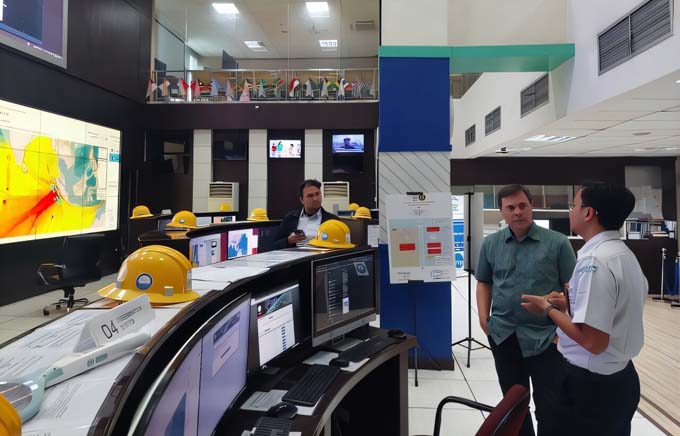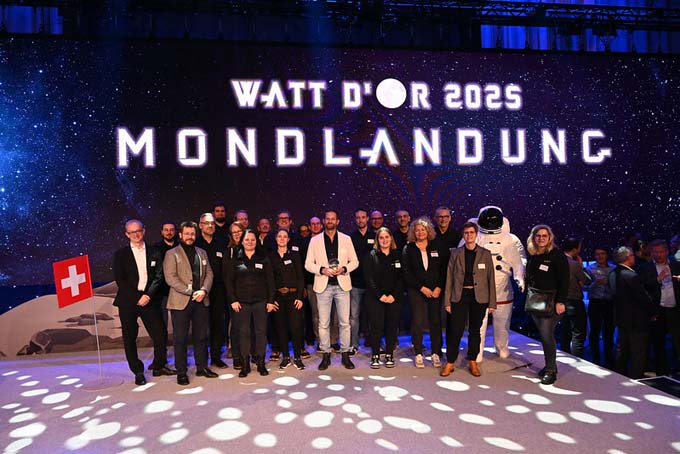The module17: skyscrapers based on wooden blocks
Researchers at the Lucerne University of Applied Sciences and Arts have developed Module17, a sustainable concept for high-rise buildings made of stackable wooden modules. They can be flexibly adapted to different uses.

Module17, high-rise buildings based on wood blocks - how can that be done? High-rise buildings in a wood or wood hybrid construction - wood and other materials - can be an environmentally friendly solution because they reduce the carbon dioxide emissions for the construction of the building park. In the Innosuisse-supported project "HolzHybridHochHaus. Typology for high-rise buildings in wood hybrid construction for urban densification", researchers from the Lucerne University of Applied Sciences and Arts have investigated the potential of wood hybrid high-rise buildings for the cities of the future and designed a concept with Module17 that allows them to be designed in a highly flexible way.
17 by 17 meters
"With Modul17, we are providing a construction kit that can be used over and over again without the resulting high-rise buildings all looking the same," says project manager Frank Keikut of the Competence Center Typology & Planning in Architecture (CCTP) at the Lucerne University of Applied Sciences and Arts. Module17 is made of almost 90 percent wood and, with a floor plan of 17 by 17 meters - hence the name - and a height of about 14.5 meters, it offers a high degree of flexibility of use over its entire life cycle, both vertically and horizontally. This makes it maximally efficient, adaptable even in concise urban structures and, moreover, extremely flexible both horizontally and vertically. "Even a subsequent conversion of an office building into a residential building or vice versa is possible with Module 17," explains Keikut.
One stackable module
Each individual module is supported in the corners by four "mega-columns" that carry the vertical loads and conceal the building services in a cavity inside them. Directly below the module's ceiling, a "mega floor" consisting of floor-to-ceiling trusses transfers the vertical loads to the mega columns. As a result, the entire floor plan is column-free and can be freely designed as "free space." A "mega ceiling" in wood-concrete composite construction separates the modules from each other and, together with reinforced concrete staircases located outside the module, provides the horizontal bracing. The modular system developed allows Module17 to be extended horizontally and stacked vertically. It thus offers any number of combination options.
For apartments, swimming pools or offices
Within each individual module, partition walls and ceilings can be freely set; for example, for use as a commercial hall or school without or with only one intermediate ceiling, as a three-story office module with two or as a four-story residential module with three intermediate ceilings. At the same time, the structure allows a free design of the facade; from all-glass to a perforated facade typical of residential buildings, many things are feasible. This makes Module17 very flexible; swimming pools or open-plan offices can be realized just as easily as conference or concert halls. Using an approximately 130-meter-high prototype consisting of a total of 58 modules, the researchers, in collaboration with experts from the field, validated the findings and demonstrated their practicality. In order to demonstrate the full spectrum of possibilities of wood hybrid high-rise buildings, the researchers - an interdisciplinary team of architects, fire protection experts, construction economists, wood builders and building technicians - tested Module17 and the prototype in various urban structures and investigated them in terms of structural analysis, building technology, production, assembly, economic viability and possible financing methods.
Wooden houses as carbon reservoirs
Only since the revision of the fire protection ordinance in 2015 can wooden high-rise buildings be planned and built in Switzerland. "Finally, wood is on an equal footing with other building materials from a fire safety perspective," says Keikut. Thanks to modern technology, the behavior of wood in the event of a fire has long been a process that can be simulated, calculated and controlled. Says Keikut, "There are no significant differences in fire protection compared to conventional building materials." As a result, the potential of wood can now be exploited in high-rise construction. "Wood is the most sustainable of all resources available to construction," Keikut says. No energy is required for production; pines, spruces or beeches grow on their own; processing is also relatively low-energy. At the same time, the building material binds CO2. According to Keikut, a wooden house is in effect a carbon store.
Shortened construction time thanks to prefabrication
In addition, wooden buildings are lighter than concrete or steel buildings. The material can also be processed and prefabricated with millimeter precision. Shifting work from the construction site to the production hall, which is becoming standard for many construction methods in the course of digitalization, has a long tradition in timber construction. "This not infrequently shortens construction time by up to 50 percent and enables construction processes to be timed precisely, which ultimately also has an impact on construction costs," Keikut calculates. In addition, wood is an aesthetically pleasing building material. "It comes into the world with a sensory component. Its smell, its surface - it would be a shame to hide those."
Publication "Module17. High-rise typology in wood hybrid construction".
The competence centers involved in the project were Typology & Planning in Architecture (CCTP) (project management) and Structural Engineering (CCKI) of the Lucerne University of Applied Sciences and Arts and the economic partners Künzli Holz AG, Burkhalter Sumi Architects Ltd., Makiol Wiederkehr AG, b+p construction ltd., Vadea AG, Lignum timber industry, Wood construction Switzerland, Association of Cantonal Fire Insurers VKF, Graubündner Cantonal Bank, Prof. Quick and Colleagues - Engineers and Geologists Ltd..
The research project "HolzHybridHochHaus - Typology for high-rise buildings in wood hybrid construction for urban densification" was funded by Innosuisse - Swiss Agency for the Promotion of Innovation.
The researchers have summarized the results of the "HolzHybridHochHaus" project, which is supported by "Innosuisse - Swiss Agency for Innovation Research", in a publication. It has just been published by vdf Hochschulverlag AG at ETH Zurich.
Keikut, Frank and Sonja Geier: Module17. High-rise typology in timber hybrid construction, vdf Hochschulverlag AG at ETH Zurich 2019, 124 pp. Fr 36.00.
ISBN 978-3-7281-3979-5
Also available as eBook, order option here.









